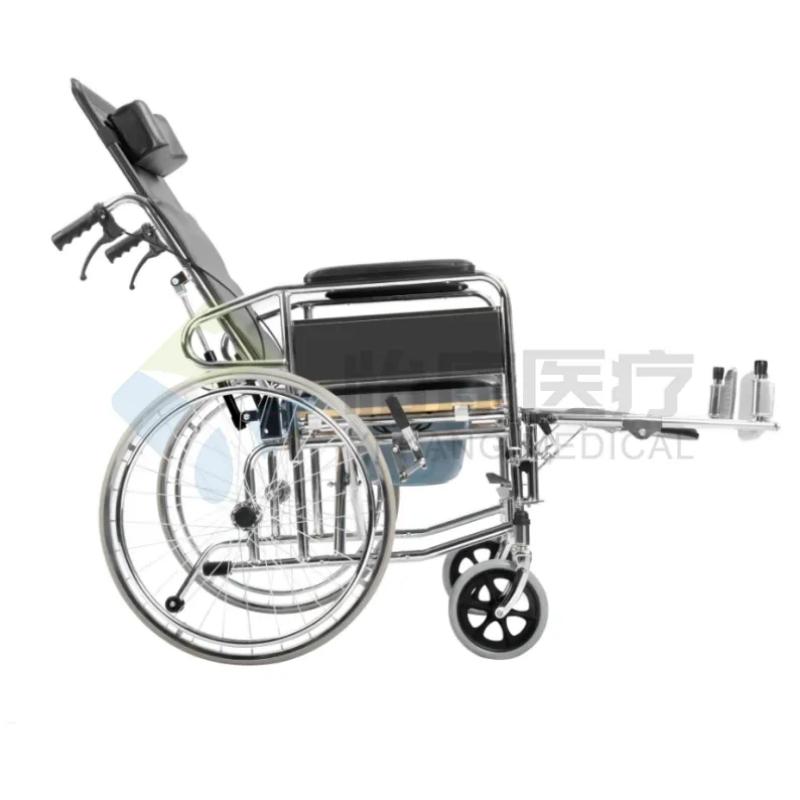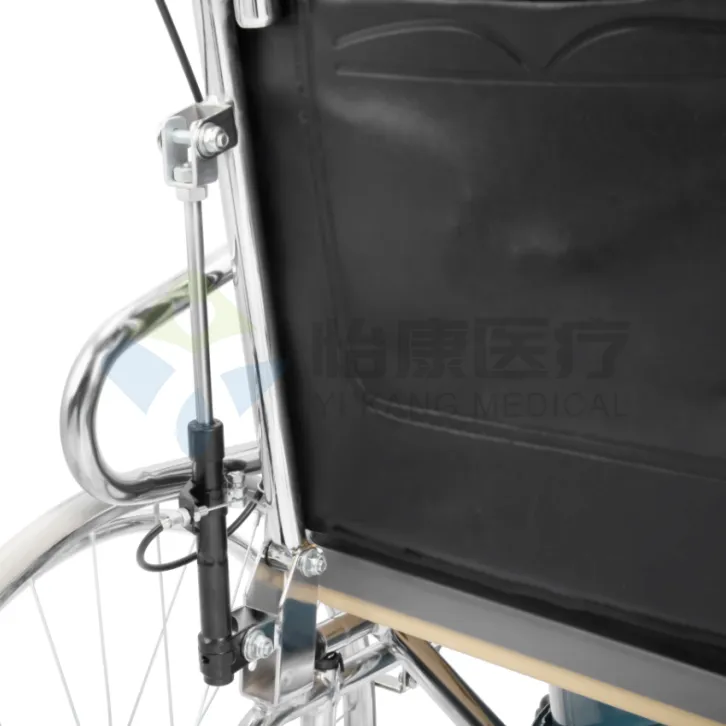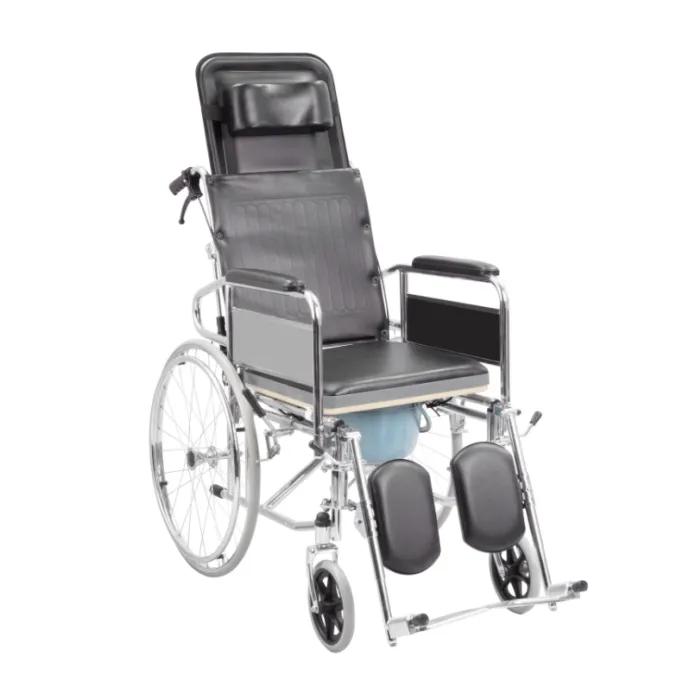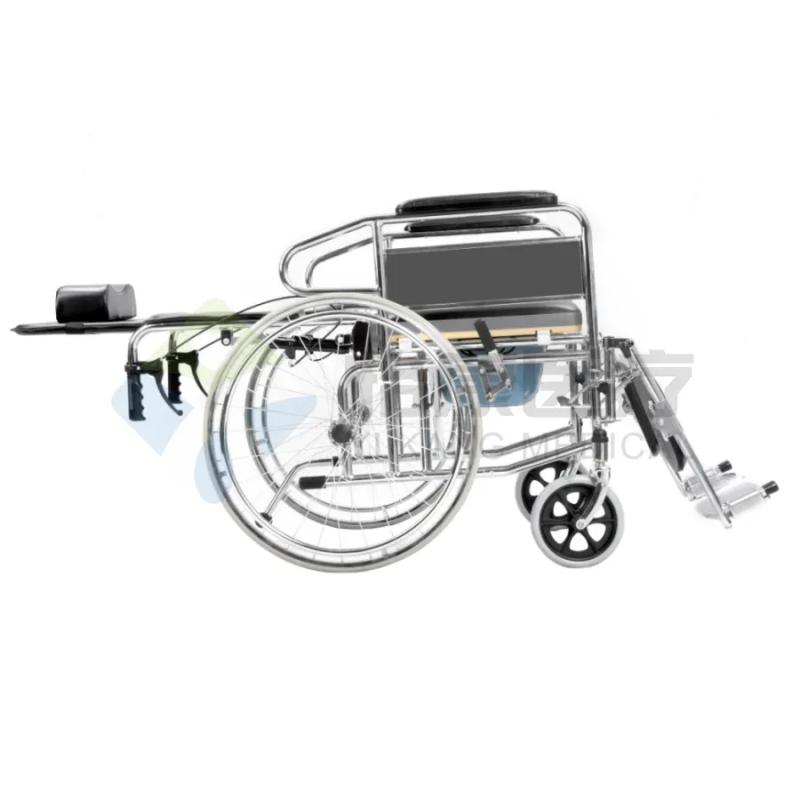As an effective rehabilitation and daily life aid, the toilet wheelchair has gradually come into people's view and become a daily necessity for many people who need care and support. However, who needs a commode wheel chair? In practical applications, what specific needs and considerations do users of toilet wheelchairs have? This article will explore these issues in depth to help readers more clearly understand the applicable population and importance of commode wheel chairs.

What is a commode wheel chair?
The commode wheel chair is an auxiliary tool that combines the functions of a wheelchair and a toilet. Its design not only helps people with limited mobility to move easily at home or in places such as hospitals, but also has the function of facilitating toileting. Usually, a toilet wheelchair has a potty or toilet bag under the seat, so that users can use the toilet conveniently while maintaining relative independence.
The core features of the commode wheel chair include:
● Convenient for people with limited mobility to use the toilet in different places;
● Save physical strength and reduce the risk of moving and transferring;
● Maintain personal dignity and privacy;
● Reduce the burden on caregivers.
Unlike ordinary wheelchairs, commode wheel chair can provide a higher quality of life for elderly people, patients and disabled people with limited mobility, especially in terms of daily life needs such as going to the toilet. For these people, toilet wheelchair is not only an auxiliary tool for mobility, but also an important support for them to maintain dignity and independent life.

Who needs commode wheel chair?
People who need commode wheel chair:
1. Elderly group
2. Chronic disease patients
3. Rehabilitation patients
4. Disabled people
5. Pregnant women or postpartum recovery
6. Long-term bedridden patients
7. Special groups who need care
1. Elderly group
The elderly group is one of the main user groups of toilet wheelchair, especially those elderly people whose physical strength gradually declines and have difficulty in moving. With the increase of age, many elderly people face different degrees of physical problems, such as arthritis, osteoporosis, muscle atrophy and other diseases, which directly affect their mobility. Especially for the elderly who have been bedridden or semi-lying for a long time, commode wheel chair can help them solve the problem of going to the toilet, and it can also facilitate daily care for caregivers.
For the elderly with limited mobility, the toilet wheelchair not only allows them to move freely at home, avoiding the inconvenience and embarrassment caused by frequent toileting in bed, but also effectively reduces falls and injuries caused by lack of physical strength. For the elderly, maintaining a certain degree of independence and not relying on the help of others is one of their important needs, and the commode wheel chair just meets this need.
2. Chronic disease patients
Many people with chronic diseases, such as stroke, diabetes, heart disease, and neurological diseases, often face the problem of limited mobility. These patients may need to stay in bed for a long time or rely on others to help them complete their daily lives. The design of the toilet wheelchair allows patients to no longer rely on others when going to the toilet, combining the toilet function with the mobility function of the wheelchair, greatly improving their quality of life.
For example, stroke patients may lose the ability to move one side of their limbs during the recovery period, and in severe cases they may even be unable to stand. The commode wheel chair can help them maintain a certain degree of mobility and independence. Patients can use wheelchairs to go to the toilet freely to a certain extent, reducing the burden on caregivers and protecting the privacy of patients.
In addition, diabetic patients may suffer from nerve damage and motor dysfunction due to long-term medication or blood sugar fluctuations. The commode wheel chair provides these patients with a better quality of life, allowing them to handle physiological needs without relying on others and reduce the distress caused by physical discomfort.

3. Rehabilitation patients
Rehabilitation patients, especially those who have undergone surgery, major disease treatment or recovery after an accident, are also an important user group of the toilet wheelchair. During the rehabilitation process, patients are often subject to temporary mobility restrictions, especially those who have undergone lower limb injuries, fractures or joint replacement surgery, who need some time to recover their mobility. In this process, the commode wheel chair can effectively reduce the patient's mobility and avoid unnecessary injuries caused by the patient's inconvenience of movement.
For example, patients after hip replacement surgery may have difficulty standing or walking for a certain period of time. The commode wheel chair not only provides a convenient toilet function, but also helps patients move more conveniently from the bed to the bathroom, etc., providing greater convenience for their recovery period.
4. People with disabilities
For patients with long-term limb disabilities, especially those with lower limb function loss, the toilet wheelchair is particularly important. Patients with lower limb disability are usually unable to stand or walk, and are bedridden or in wheelchairs for a long time. Therefore, the toilet wheelchair can provide a better toilet solution, avoiding the difficulty of disabled people relying on others to carry or change postures when using the toilet, and providing a more convenient and independent lifestyle.
For example, patients with spinal cord injury or quadriplegia may not be able to use a traditional toilet. The design of the commode wheel chair allows them to complete toileting without leaving the wheelchair, ensuring their greater self-care ability and privacy in life.
5. Pregnant women or postpartum recovery
Although pregnant women or postpartum recovery do not need to rely on the toilet wheelchair for a long time in most cases, in certain circumstances, such as the end of pregnancy or the early stage of postpartum recovery, the toilet wheelchair can provide certain support for these women due to inconvenience in mobility. Especially in the late pregnancy, the enlargement of the abdomen may affect the mobility of pregnant women. The commode wheel chair not only provides a convenient toilet function, but also provides them with more comfort and convenience.
During the recovery period, postpartum women, especially those who have undergone cesarean sections, often need to avoid excessive fatigue or rapid activities, and the toilet wheelchair can reduce the physical burden when going to the toilet and provide assistance for postpartum recovery.
6. Long-term bedridden patients
Long-term bedridden patients are usually unable to move independently due to physical discomfort or disease limitations. For these patients, the use of toilet wheelchair is crucial. The traditional way of going to the toilet in bed may cause additional physical pressure on the patient and easily cause complications such as bedsores. The toilet wheelchair can help these patients go to the toilet at the bedside or bedside, which is convenient and can reduce the adverse effects of long-term bed rest.
For long-term bedridden patients, the toilet wheelchair is not only a toilet tool, but also an important device to help them maintain some mobility and quality of life.
7. Special groups that need care
In addition to the above common groups, some special groups that need long-term care, such as severely disabled people and patients with Alzheimer's disease, also need commode wheel chairs. These people often have severely limited mobility due to the degeneration of their physical functions, and they are even unable to complete basic toilet activities independently. The toilet wheelchair provides them with a more convenient way to go to the toilet, reduces their dependence on caregivers, and improves their independence in life.
Patients with dementia may lose some of their self-care ability at different stages of the disease, and the commode wheel chair can help them reduce their dependence on others and maintain their privacy and dignity to a certain extent.

What is the role and significance of the commode wheel chair?
The commode wheel chair is not just a simple life-assisting tool. It provides more independence and dignity for people with limited mobility, especially in the private link of going to the toilet, which can effectively help users solve the problems of daily life. For the sick, rehabilitated, disabled or elderly groups, the toilet wheelchair can reduce their embarrassment and inconvenience caused by relying on others during the toilet process, greatly improving their quality of life.
For caregivers, the toilet wheelchair also plays a role in reducing the workload and avoiding frequent handling and operation. By using the commode wheel chair, caregivers can more easily help patients complete toilet tasks while ensuring the safety and comfort of patients.
How long does it take to ship products from Yikang Medical?
At Yikang Medical, we prioritize fast and reliable shipping for all our medical equipment and hospital furniture. Depending on your location and order size, shipping times can vary. However, we strive to ensure that all orders, whether for small or large quantities, are processed quickly and delivered on time. As a leading supplier in China, we work with trusted shipping partners to guarantee timely deliveries, allowing you to receive your products when you need them.

